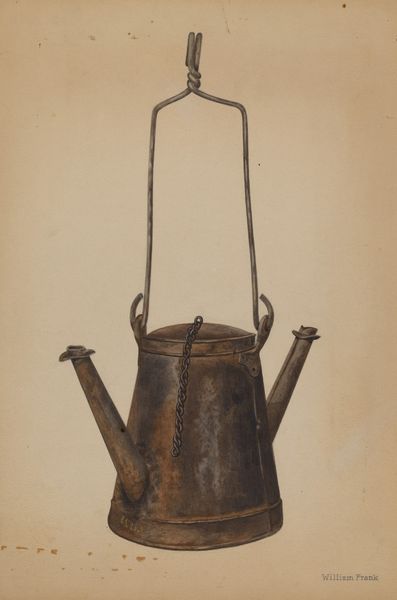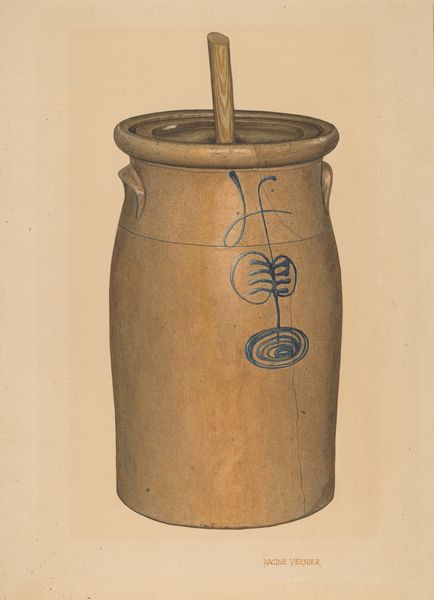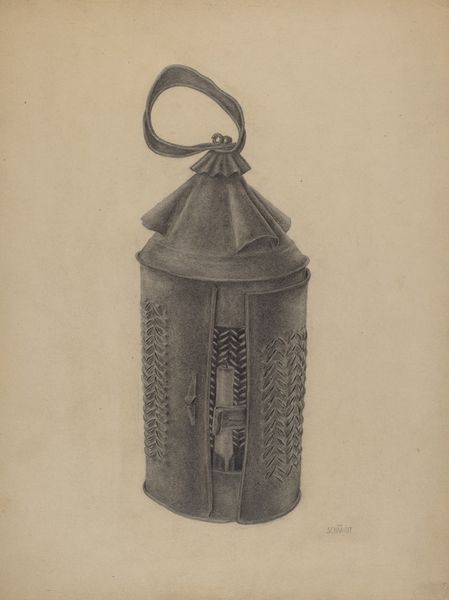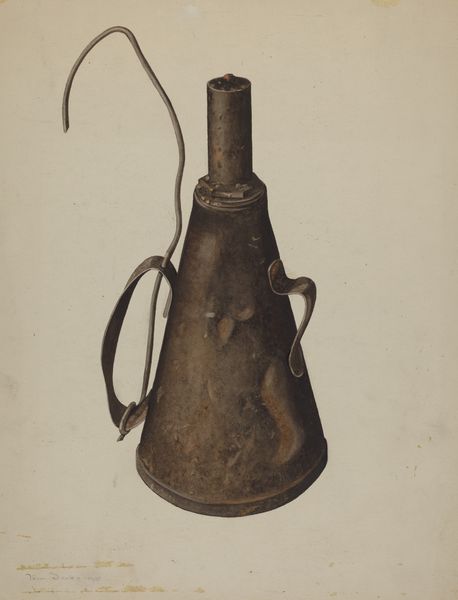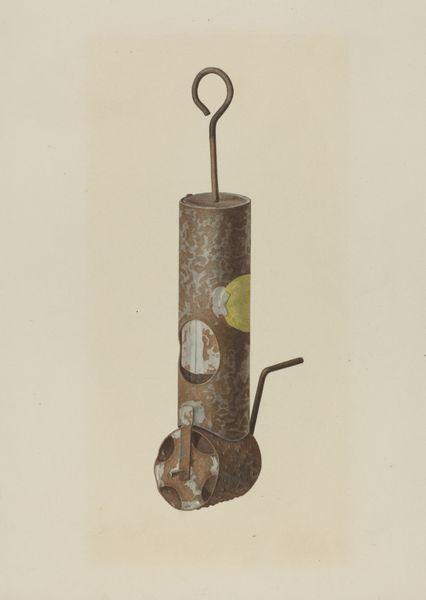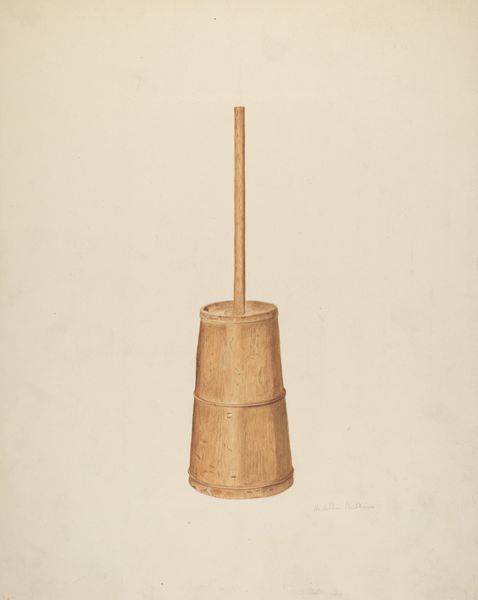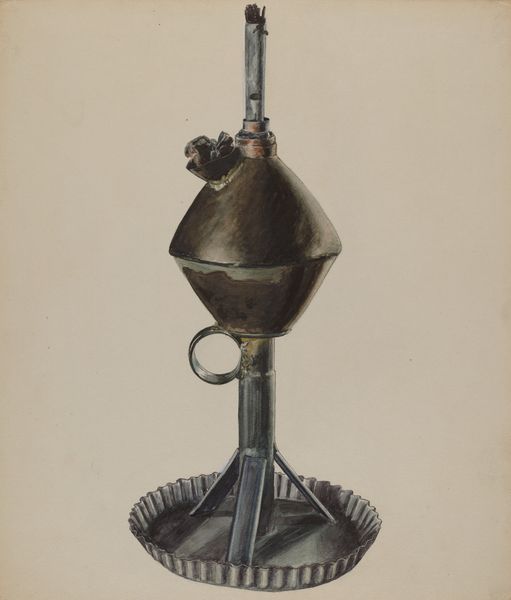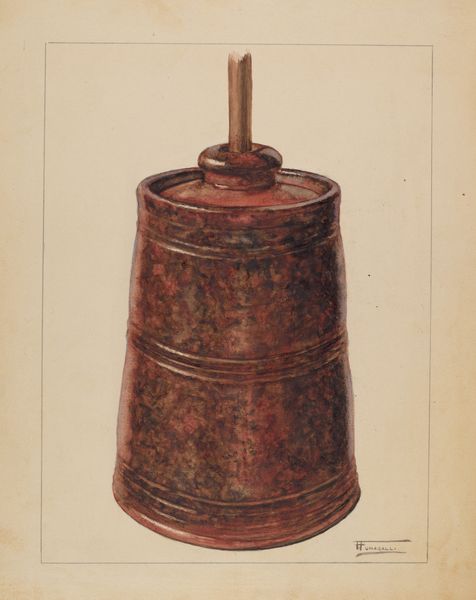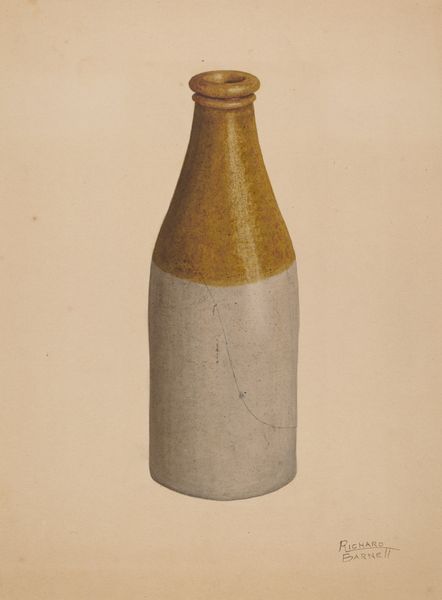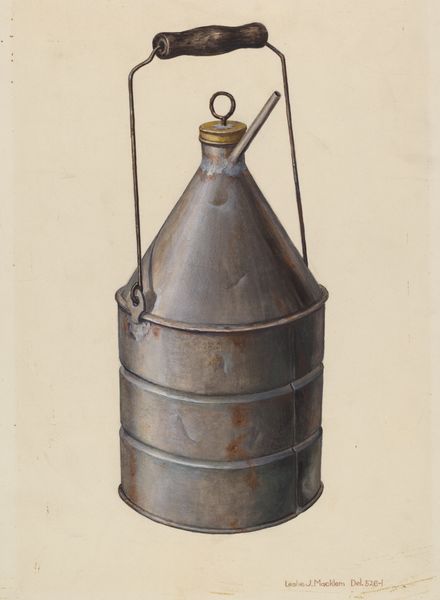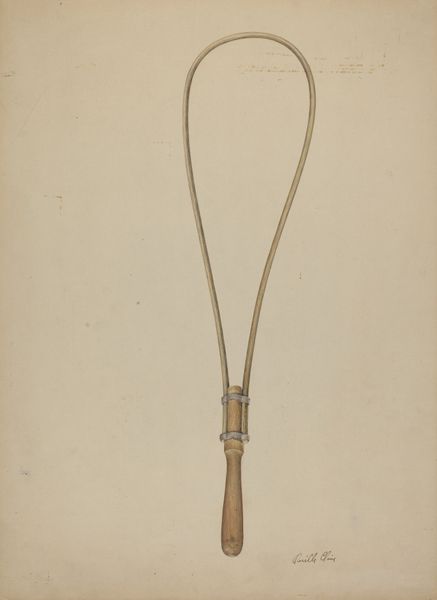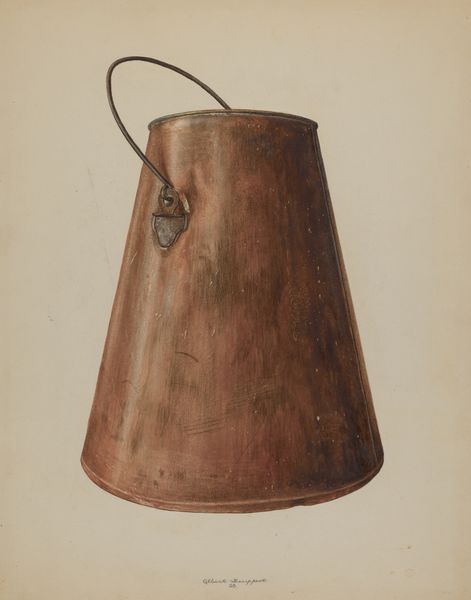
drawing, paper, watercolor
#
drawing
#
paper
#
watercolor
#
ceramic
#
watercolour illustration
#
watercolor
Dimensions: overall: 35.6 x 24.4 cm (14 x 9 5/8 in.) Original IAD Object: 12" high; 4 1/2" wide
Copyright: National Gallery of Art: CC0 1.0
Editor: This watercolor on paper, “Camphene Lamp,” was created by Jacob Gielens in 1938. It's rendered in muted grey tones that give the illustration a rather melancholic feel, wouldn't you say? What strikes you about it? Curator: I'm particularly drawn to how Gielens has chosen to depict such a utilitarian object. Notice the level of detail given to its construction: the metal seams, the delicate chain attaching the cap. It invites us to consider the lamp not just as a source of light, but as an artifact of labor and resourcefulness. Where was this lamp made? Who used it? What was the experience of relying on such a source for illumination? Editor: That's interesting. So you’re saying it moves beyond just being a pretty picture of an old lamp. Curator: Precisely. Consider the material limitations and possibilities: watercolor and paper versus the metal and fuel required for the lamp. This rendering invites an exploration into the relationship between artistic representation and material production. How does Gielens transform an everyday item into something worthy of artistic consideration, something beautiful? Does the very act of meticulously rendering it elevate its status? Editor: I see your point. By focusing our attention on the lamp’s construction and materiality, the artist makes us think about the labor and resources required to produce even something as simple as a lamp. Curator: Yes, and the lamp’s function speaks to specific historical conditions. Think of the social context: what does this type of light source tell us about daily life in 1938, its access to resources and technology? Editor: That’s a perspective shift for me, I am not looking at just form but means of production. Curator: Indeed. It is a beautiful meditation of the history of labor through close looking at its form.
Comments
No comments
Be the first to comment and join the conversation on the ultimate creative platform.
